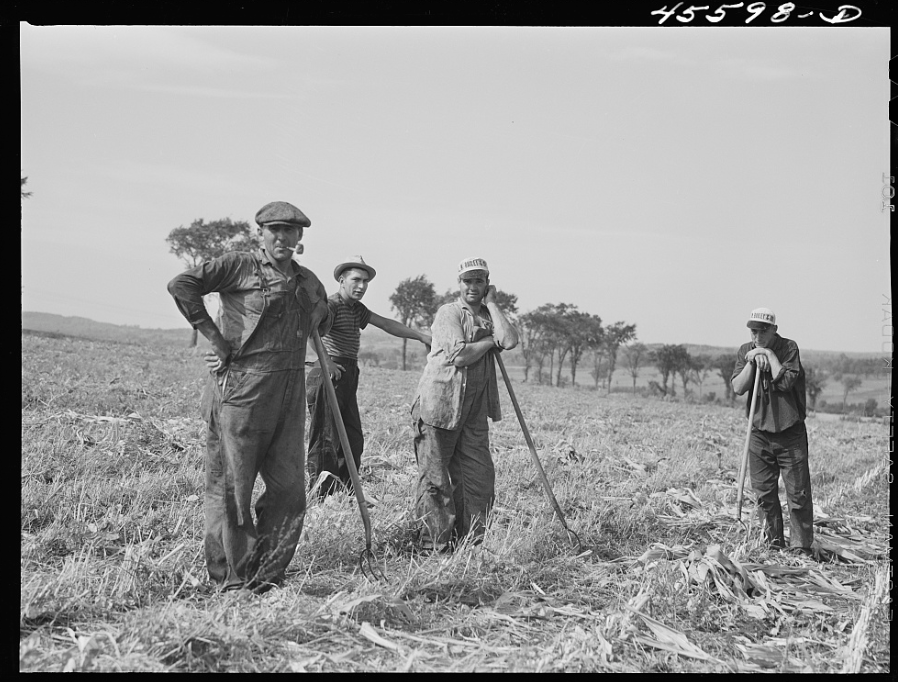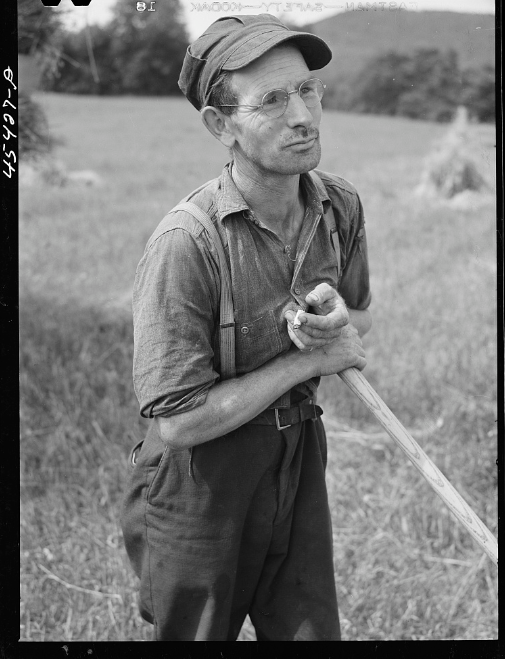Last September, I had the opportunity to bring my research on French Canadians to the Vermont Truth and Reconciliation Commission’s Educational Series. Established by statute in 2022, the Commission is tasked with seeking “community-centered justice and holistic healing” for individuals and groups that have suffered from policies and social practices leading to discrimination in Vermont. Groups explicitly mentioned in the empowering legislation are Indigenous people, people with disabilities, people of color, and French Canadians and individuals of mixed heritage, though the Commission has the liberty to expand the list of studied populations.
A number of researchers have sought to bring to light the history of French Canadians in Vermont. Unfortunately, the state typically receives little attention in larger works of Franco-American history. In Vermont, some individuals might be five or six generations removed from the moment of migration. In the intervening time, cultural compromises, the weight of mainstream U.S. culture, occupational interests, and rural exodus have all played a part in diminishing the visibility and relevance of Franco-American culture. Public knowledge of that culture in the Green Mountain State is now slim, a situation made worse by the absence of a statewide advocacy organization (as New Hampshire has) or publicly-funded collecting institutions (as Maine has) dedicated to French-Canadian heritage. This is not to diminish the work of the Alliance française of the Lake Champlain Region, the Vermont French-Canadian Genealogical Society, and venues that showcase Franco-American art; it is, rather, a comment on how much more can and should be done to stimulate knowledge of the state’s multiethnic past.

More significant than the Commission’s objectives, at the moment, is the need to deepen our understanding of French Canadians’ historic experiences in Vermont. We have stories—but that is different from a body of sustained and systematic research that answers historical questions. How did French-Canadian immigrants and their descendants interact with the majority culture? To what extent were they welcomed and in what settings? What hurdles did they have to overcome? How did they view the prospect or possibility of assimilation? How did their culture evolve in Vermont? What part did the state government and other public bodies play in French Canadians’ ability to succeed in the host society?
We have research leads based on population figures, occupational categories, the writings of prominent Vermonters, and oral histories. These are but the tip of the iceberg. My remarks, which follow, point to the need for continued work.
* * *
Thank you for the invitation. I won’t say too much about myself since our time is limited. I grew up just twenty minutes from the border in southern Quebec. I am mostly of French-Canadian descent and much of my work for the last decade has focused on French-Canadian and Franco-American experiences across borders. Today I am joining you from the unceded homeland of the Wolastoqiyik people.[1]
In my first foray in Franco-American history, as a graduate student, I studied the infamous Wright report of 1881, in which a Massachusetts civil servant called French Canadians “the Chinese of the East.” In that moment we find exactly what I want to express today: the ambiguous position that Franco-Americans have occupied in this country from the standpoint of inclusion and integration.
The phrase “Chinese of the East” was meant as a slur: it referred to French Canadians’ supposed transience and unwillingness to commit to U.S. institutions. It fed on anti-Chinese sentiments; only a year later, Chinese migrants would be singled out for immigration exclusion. This was a way to degrade French Canadians. The other part of the equation is that it was received as a slur. French-Canadian immigrants rejected the comparison to a visible minority, a racialized minority. Decade after decade, they would seek to prove their whiteness—and to assert their status and gain access to the privileged majority. Often, Franco-Americans have had the luxury of becoming invisible. In my view, any discussion of French-Canadian experiences has to take into account the in-betweenness.
Okay, let’s focus on Vermont. By 1860, it had received more French-Canadian migrants than any other New England state—about 16,000 French Canadians then lived in the state. In this regard, Vermont was quickly outpaced in numbers by other states during and after the Civil War. But its French population continued to grow through migration and natural increase. If it hadn’t been for this increase, the state’s total population would have dropped in the second half of the century as Anglo-Vermonters moved to western New York, Ohio, and farther west. French Canadians’ economic role and influence only grew. Early on, young men crossed the border in small crews to help with the harvest. But over time they would work on the docks of Lake Champlain, in the quarries of Barre and Rutland, in railway construction; some were skilled craftsmen, some bought farms. Women took in sewing, taught, nursed, entered clerical and factory work, and performed various unacknowledged and unpaid labor that made all of the rest possible.
Vermont had its own Wright report—it’s called Vermont: A Study of Independence and it was published by Rowland Robinson in the 1890s. Infamously, Robinson wrote of the “infestation” of Vermont by an inferior class of French Canadians—a small army of “professional beggars” coming down from Quebec. He had more to say. But it seems that beneath the invective, French Canadians had made the fatal error of being poor and Catholic. I’m being facetious, of course, but these two facts go much farther than anything else in explaining the reception they faced as immigrants.
My remarks tonight are necessarily vague because despite the critical role played by Franco-Americans in the making of Vermont, research is still in its infancy. There are archival collections with Franco-American materials; there are sound scholarly works like those of Peter Woolfson, André Sénécal, Betsy Beattie, and Mark Richard; there are also community members who can speak about their experiences and those of their forebears. But we need more. Outside of Richard’s work on the Ku Klux Klan, few researchers have offered an in-depth view of patterns of marginalization targeting Franco-Americans. What punishment did they face for speaking French in the schoolyard? How often were they passed over for a position simply for being French or Catholic? How many electors could not in good conscience vote for a “Franco” because of his or her background?
Our spotty evidence is all over the place. Anglo-dominated organizations put on performances of dialect speech, a form of ethnic minstrelsy that ridiculed French Canadians. At the other end of the spectrum, we have Yankee Vermonters who opened their homes to traveling laborers. My great-, great-uncle received public assistance in the era of local charity and town farms. We find in French Vermonters’ experiences both the best and the worst of intercultural encounters, a reflection of their ambiguous position. I invite greater discussion as well as greater research.
* * *
These remarks led to an engaging discussion with fellow panelists and Commission members, though one that deserved a larger audience, no matter who the speaker or speakers may have been. We can or should wish for greater public engagement with the Commission’s work. That work could easily be cast by detractors (and no doubt is) as an empty act of liberal self-flagellation—woke ideology gone awry. O tempora, o mores.
Such fearful dismissal overlooks how few and far-between publicly-funded fact-finding missions are, particularly when it comes to Franco-American heritage. (The closest approximation, Maine’s Task Force on Franco-Americans, came more than a decade ago.) Here are public funds to study the past and present experiences of a group that at one time, purely on the basis of ancestry, may have represented one-third of the state’s total population. The fact that Indigenous, Black, and other populations are also under study only sheds more light on experiences that may have been either common or idiosyncratic. All of this, like history itself, will with good fortune serve the cause of a more just society. More than self-victimization and handwringing, it will help us honor the resilience of past peoples and help guide us through challenges faced by present-day minority groups.

Naturally, the work of the Commission and whatever response comes of the state legislature should not blind us to the need for broader action. Discrimination was hardly ever the work of government exclusively; often, a two-tier society could thrive under a do-nothing government—the kind long mythologized in the Green Mountain State.[2] Similarly, we cannot imagine that the pursuit of this “more just society” will be successful if only top-down. It will require grassroots networks and further educational efforts. This is true of other states and other regions as well.
Regardless, the spirit and actions of the Commission suggest that the most pressing task before us is to learn and there is still a lot to be learned about Franco-American realities in Vermont.
[1] Claire Quintal once referred to the relationship between francophone Quebeckers and Franco-Americans as “ces autres nous-mêmes,” or “us, otherwise.” Quebec has remained a part of the mental universe of Franco-Americans, just as Vermont, in a more limited way, has remained a part of the cultural and historical consciousness of Quebec families along the border. My branch of Lacroix stayed. Many left and most settled in Vermont—notably in St. Albans, Enosburgh, Essex Junction, and Burlington. It doesn’t take a great effort of historical empathy to appreciate the circumstances—opportunities and challenges—of “me, otherwise,” that is, what could have been and what actually was for the migrants and their descendants.
[2] A first attempt to come to grips with discrimination occurred in the 1980s through the Vermont Advisory Committee to the U.S. Commission on Civil Rights. The ensuing report, Franco-Americans in Vermont: A Civil Rights Perspective, stated that proximity to Quebec enabled French Canadians to “defer” integration, leading to decisions not open to other immigrant groups. The authors argued that the biggest hurdles to inclusion and upward mobility were not laws, but invisibility, stereotyping, and self-image.
Pingback: This week's crème de la crème - January 18, 2025 - Genealogy à la carteGenealogy à la carte
This is very interesting. My 2x great grandparents migrated from Chicoutimi Quebec to St Albans and Washington Vermont in the mid 1800’s. last names Dewey & Allaire. My great grandmother was born in Washington Vermont in 1899. They migrated to the Canadian prairies in early 1900’s
My great grandparents also were in Washington, VT. My father was born in Washington.
I’m a Franco-Vermonter that grew up just on the other side of the border as well. I can attest that discrimination still exists here… similarly to how Québécois experience discrimination from Anglo-Canadians. I don’t believe Kamp Kill Kare in St. Albans was a coincidence, despite no link supposedly found. The name was only recently changed in 2020.